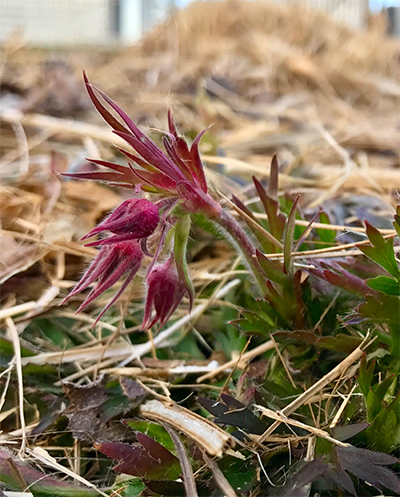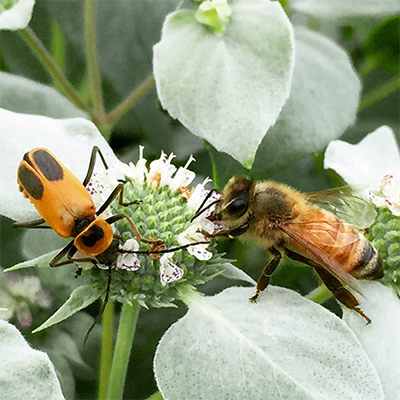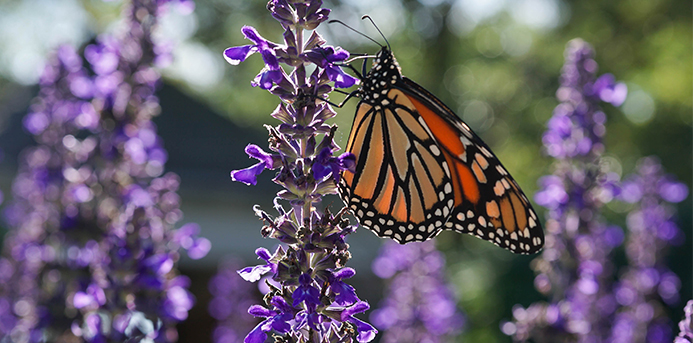Imagine an all-you-can-eat buffet that offers only meat. No veggies. No fruit. Not even water. Would you go? Probably not. This is how pollinators see your landscape, particularly if it appeals to only one type of pollinator. Whether your yard is a work in progress or you have an established landscape, a few simple plant additions will have you laying out the welcome mat to a plethora of beneficial backyard creatures. You’ll also be giving Mother Earth a great big hug.
Tim Pollak, outdoor floriculturist at the Chicago Botanic Garden, recommends homeowners consider what creatures they want to attract. Butterflies and bees aren’t the only pollinators. Birds, including bats and hummingbirds, and all sorts of insects play a role in the backyard ecosystem. Once you’ve identified what it is that you want, pick plants that will satisfy that creature’s palate.
Well-chosen plants create a food chain that draws butterflies that will feed and lay their eggs, insects that will attract birds and bats, and bees that will produce gallons of honey.

“Think about plants that provide a lot of pollen and that will attract more pollinators,” says Pollak. “Nectar production qualities and host plants are important considerations.”
Host plants are plants consumed by larval caterpillars and the only plants on which female butterflies will lay their eggs. Every butterfly species has a host plant as well as specific plants it seeks out as nectar sources.
Asclepias purpurascens, better known as purple milkweed, is one such plant. As the only host plant for monarch butterflies, milkweed is crucial to their survival. It’s also a great nectar source for a variety of other butterflies including swallowtails, red admirals and fritillaries according to Mike Cerbone, manager of the North American Butterfly Association’s garden certification process. He encourages homeowners to take advantage of the sunny areas of their gardens where butterflies and other pollinators are most likely to congregate.

“The more open spaces attract the most pollinators,” says Cerbone. “So you want to maximize that space.”
A vegetable garden is another great opportunity to foster pollinators. Carrot, dill, fennel and parsley are hosts plants for black swallowtails. Pollak cautions that fennel can be invasive and suggests removing the seed head to prevent it from spreading. If a few invade other parts of the landscape, hand pulling is simple and effective.
Laura Ekasetya, director and head horticulturist at Chicago’s Lurie Garden, recommends homeowners consider the entire spectrum of the growing season from early spring to fall. Prairie smoke (Geum triflorum) is a native, low-growing early bloomer that is a great edging plant as well as a perfect filler between other plants. But the number one plant for pollinators at the garden is Blunt Mountain Mint (Pycnanthemum muticum).
“It blooms at a time when there’s less nectar flow,” says Ekasetya. “And it attracts every other crazy thing that pollinates like solitary wasps and soldier beetles.”
No room for a garden? No problem. A moveable feast will work just fine. Containers filled with easy plants like Shasta daisies, black-eyed Susans, marigolds, zinnias or coneflowers are a thoughtful and colorful addition to any patio or balcony.
“Always try to have something in bloom,” says Pollak. “Like a buffet.”

